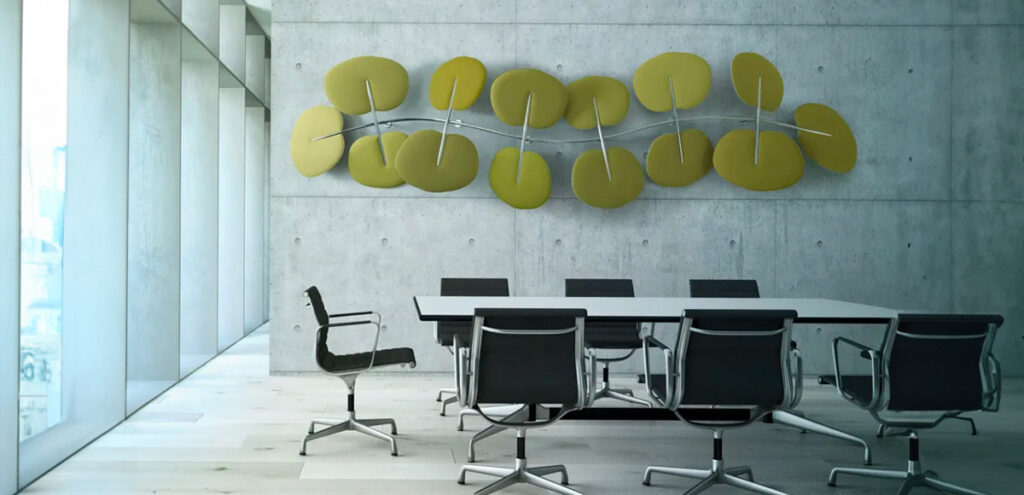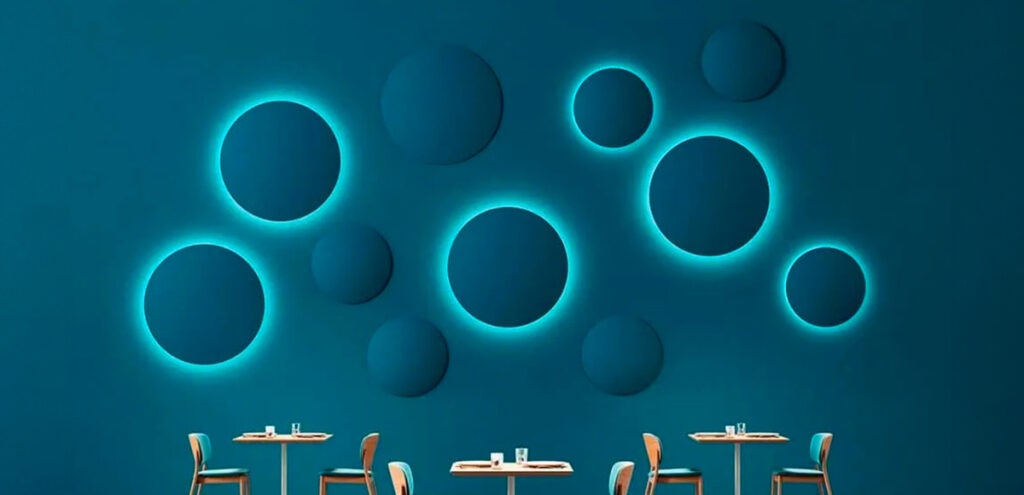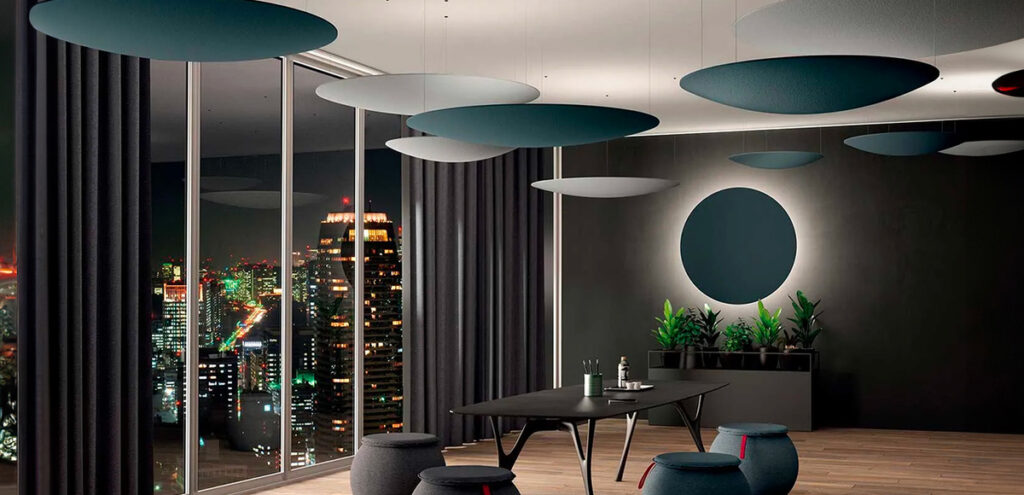In restaurants and bars, sound is part of the service. When reverberation builds up, conversations fracture, service slows, and the experience feels “loud” rather than lively. The upside: today you can correct acoustics with non-structural, fast-install solutions that respect the interior concept and keep operations running.
WHY ACOUSTIC COMFORT MATTERS
Clear speech at low voice equals ease, privacy, and a longer dwell time. Balanced rooms reduce fatigue for guests and staff and lift perceived quality—just like lighting and tableware do.
Noise costs
High background noise breeds operational errors (missed or misunderstood orders), slows service, adds waste, and raises staff stress—all of which erode margins. It also shortens table time and depresses average check.
When acoustics disappoint, guests don’t stay, don’t return—then complain online
If you must speak over the room to be heard, conviviality evaporates. That fatigue becomes the takeaway—and often the content of negative reviews—regardless of how good the kitchen is.
Noise spoils taste, conviviality, and inclusion
Excess reverb doesn’t only disrupt conversation; it can alter flavour perception and make socializing effortful. For guests who are hard of hearing or sensitive to stimuli, poor acoustics becomes a barrier rather than a welcome.



Acoustic correction is an investment, not a cost
Modern sound-absorbing technologies achieve results with less material than traditional options—meaning quicker installs, controlled budgets, and better sustainability, without compromising durability. The budget should guide the solution, not limit it.
Tuned acoustics elevates the culinary experience
In a well-balanced room, every word between diners is clear and intimate without spilling to adjacent tables; the focus returns to food and company, and the evening is remembered for the right reasons.
How to fix it well (a practical, low-disruption path)
- Survey & sizing – Evaluate the room and calculate the right amount of absorption to avoid both under-treatment (problem persists) and over-treatment (dead room and wasted budget).
- Non-structural solutions – Ceiling/wall panels, acoustic curtains and lamps, upholstered elements, and wall coverings—often multifunctional (acoustics + lighting/division). Installations are quick and don’t require structural work.
- Integrate with lighting – Acoustic systems can be coordinated with, or incorporate, lighting fixtures for a clean, coherent design.
- Special cases – Vaulted ceilings? Acoustic curtains are a cost-efficient way to tame reverb and create more intimate zones.
- Flex & maintenance – Elements are reconfigurable as layouts evolve; certified materials support hygiene and long-term performance.
La Mercanti supports owners and designers with acoustic surveys, product selection, and turnkey supply/installation for HoReCa spaces—always tailored to the brief and the brand language.